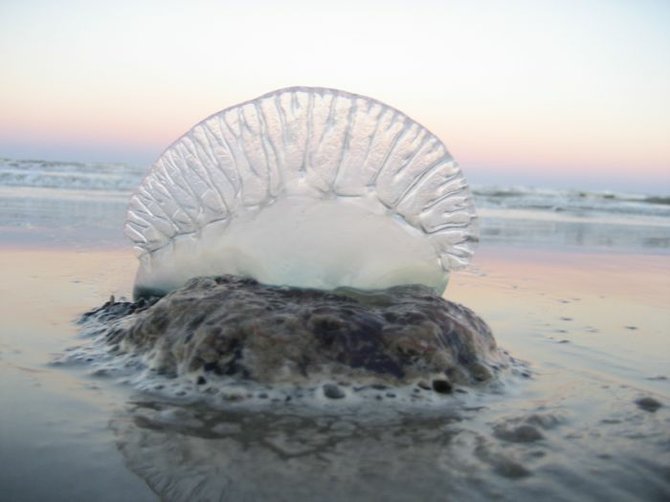 Facebook
Facebook
 X
X
 Instagram
Instagram
 TikTok
TikTok
 Youtube
Youtube

The flag was at half-mast the Sunday morning last April when we pulled into Padres Island Visitors Center to purchase our backcountry camping permit to the largest undeveloped barrier island in the world.
The National Park Service website had lured us there with pictures of the pristine, barren shoreline, but we were speechless at the thought of the devastation we might see when we arrived there a day after the Deepwater Horizon drilling rig exploded, causing a three-month-long underwater gusher that would release almost five million barrels of crude oil into the Gulf of Mexico.
When we rolled down the white sand beach with the Gulf lapping our wheels, we were grateful to see that the sands were still white; the dreadful slick was still out there looming on the horizon, threatening to destroy this 70-mile stretch of protected shoreline.
We were not, however, pleased to see that the "Diesels” had beaten us there. And they had invited their cousins. Seems weekend fishermen come down from Corpus Christi in hordes. But thankfully, they also left together. After enduring their thundering exodus early Monday morning, we had the beach to ourselves.
Almost. All around our van, back up to the dunes, was a labyrinth of tiny footprints left behind by nocturnal creatures, including the Padres Island kangaroo rat and any of the twelve species of lizards that call Padres home. Although not footprints, we could also see the sideways shimmy tracks of ghost crabs. Fortunately, we saw no sign of the alligators that also lived there.
We were again on a beach in a migratory flyway. We lounged for hours that first day, watching the waves, the clouds and a squadron of pelicans gliding – slow and low – over the dunes. Black Skimmers skimmed just over the crest of the water, bottom beak down, to scoop up fish.
In the evenings when the Texas sun was not high and hot in the sky above us, we strolled the shoreline collecting the shells of baby sand dollars, skirting the many beached men-of-war, whose sheen reflected the last rays as the sun set over the high dunes.
Regrettably, during our stay on the island we did not see any Kemp's Ridley sea turtles as we had hoped, neither hatchlings nor mommas. Although only one of five sea turtles using the island as nesting grounds, it is the world’s most endangered species.
We had seen signs posted telling us what to do if we did spot one. Mainly, we were to mark where she dropped her eggs with a piece of driftwood or something like that and then tell the turtle patrol that drove by in dune buggies regularly, both night and day. Neither were we fortunate enough to see any of the six terrestrial turtles that lived there – but then again, we didn’t venture into the dunes, preferring to keep to the solitude of our beach.


The flag was at half-mast the Sunday morning last April when we pulled into Padres Island Visitors Center to purchase our backcountry camping permit to the largest undeveloped barrier island in the world.
The National Park Service website had lured us there with pictures of the pristine, barren shoreline, but we were speechless at the thought of the devastation we might see when we arrived there a day after the Deepwater Horizon drilling rig exploded, causing a three-month-long underwater gusher that would release almost five million barrels of crude oil into the Gulf of Mexico.
When we rolled down the white sand beach with the Gulf lapping our wheels, we were grateful to see that the sands were still white; the dreadful slick was still out there looming on the horizon, threatening to destroy this 70-mile stretch of protected shoreline.
We were not, however, pleased to see that the "Diesels” had beaten us there. And they had invited their cousins. Seems weekend fishermen come down from Corpus Christi in hordes. But thankfully, they also left together. After enduring their thundering exodus early Monday morning, we had the beach to ourselves.
Almost. All around our van, back up to the dunes, was a labyrinth of tiny footprints left behind by nocturnal creatures, including the Padres Island kangaroo rat and any of the twelve species of lizards that call Padres home. Although not footprints, we could also see the sideways shimmy tracks of ghost crabs. Fortunately, we saw no sign of the alligators that also lived there.
We were again on a beach in a migratory flyway. We lounged for hours that first day, watching the waves, the clouds and a squadron of pelicans gliding – slow and low – over the dunes. Black Skimmers skimmed just over the crest of the water, bottom beak down, to scoop up fish.
In the evenings when the Texas sun was not high and hot in the sky above us, we strolled the shoreline collecting the shells of baby sand dollars, skirting the many beached men-of-war, whose sheen reflected the last rays as the sun set over the high dunes.
Regrettably, during our stay on the island we did not see any Kemp's Ridley sea turtles as we had hoped, neither hatchlings nor mommas. Although only one of five sea turtles using the island as nesting grounds, it is the world’s most endangered species.
We had seen signs posted telling us what to do if we did spot one. Mainly, we were to mark where she dropped her eggs with a piece of driftwood or something like that and then tell the turtle patrol that drove by in dune buggies regularly, both night and day. Neither were we fortunate enough to see any of the six terrestrial turtles that lived there – but then again, we didn’t venture into the dunes, preferring to keep to the solitude of our beach.
Comments